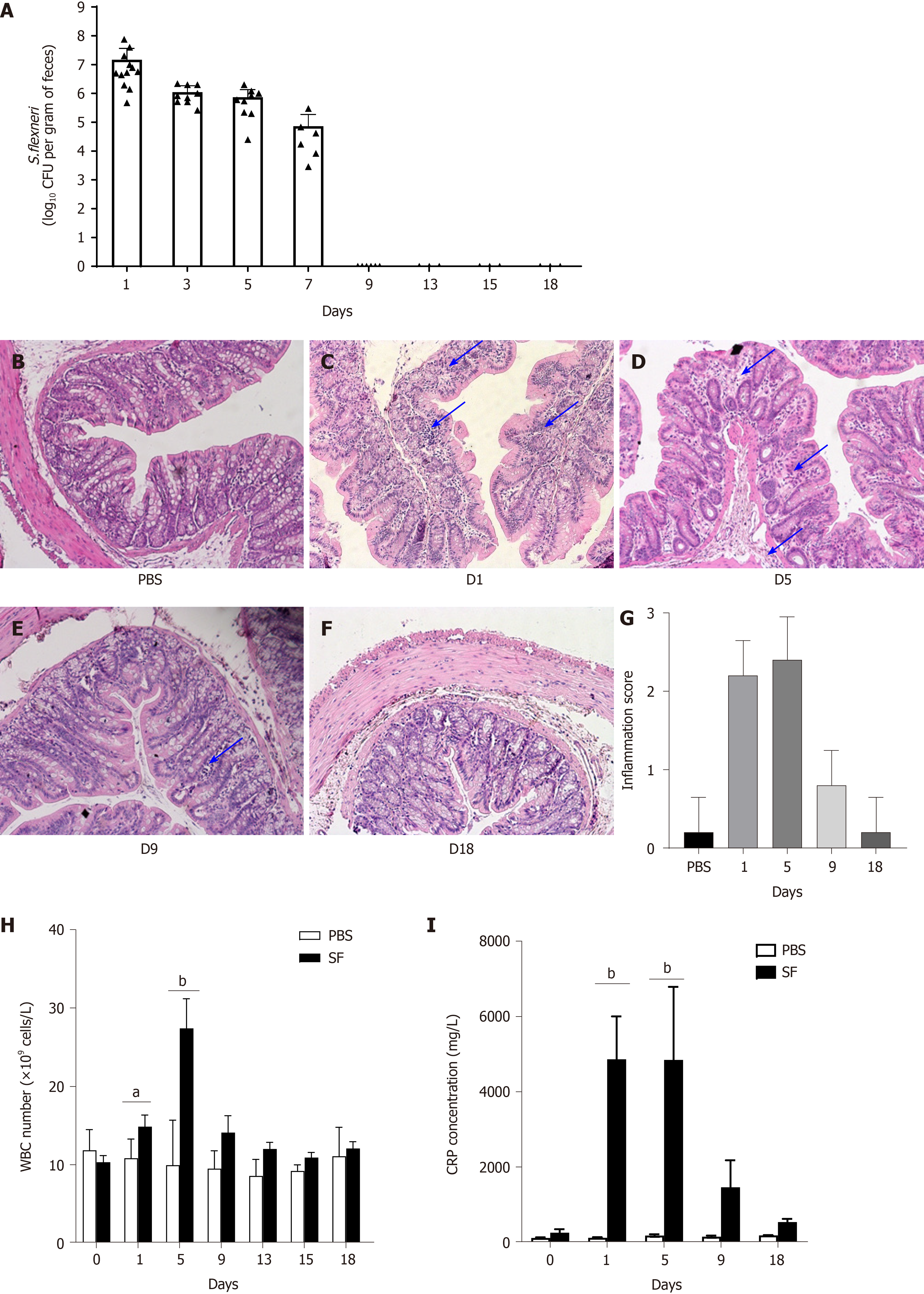Copyright
©The Author(s) 2021.
World J Gastroenterol. Oct 7, 2021; 27(37): 6248-6261
Published online Oct 7, 2021. doi: 10.3748/wjg.v27.i37.6248
Published online Oct 7, 2021. doi: 10.3748/wjg.v27.i37.6248
Figure 1 Pathogen colonization, intestinal inflammation, and changes in the white blood cell count and C-reactive protein level after Shigellaflexneri infection in rats.
A: Quantitative detection of Shigella flexneri (S. flexneri) in feces of Sprague-Dawley rats after infection; B-G: Representative hematoxylin & eosin (H&E) staining (100 × magnification) of colon tissue from control and S. flexneri-infected groups; B: H&E staining of normal colon tissue in the control group; C: H&E staining of colon tissue after S. flexneri infection at day 1; D: H&E staining of colon tissue on day 5; E: H&E staining of colon tissue on day 9; F: H&E staining of colon tissue on day 18; G: Inflammation scores of the control and infection groups at different time points; H: White blood cells counts in the S. flexneri infection and control groups; I: C-reactive protein in the S. flexneri infection and control groups. aP < 0.05; bP < 0.01; and cP < 0.001. Scale bar, 100 μm. Black arrows indicate inflammatory cell infiltration. PBS: Phosphate-buffered saline; WBC: White blood cell; CRP: C-reactive protein; CFU: Colony-forming units; S. flexneri: Shigella flexneri.
- Citation: Nie JJ, Pian YY, Hu JH, Fan GQ, Zeng LT, Ouyang QG, Gao ZX, Liu Z, Wang CC, Liu Q, Cai JP. Increased systemic RNA oxidative damage and diagnostic value of RNA oxidative metabolites during Shigella flexneri-induced intestinal infection. World J Gastroenterol 2021; 27(37): 6248-6261
- URL: https://www.wjgnet.com/1007-9327/full/v27/i37/6248.htm
- DOI: https://dx.doi.org/10.3748/wjg.v27.i37.6248









